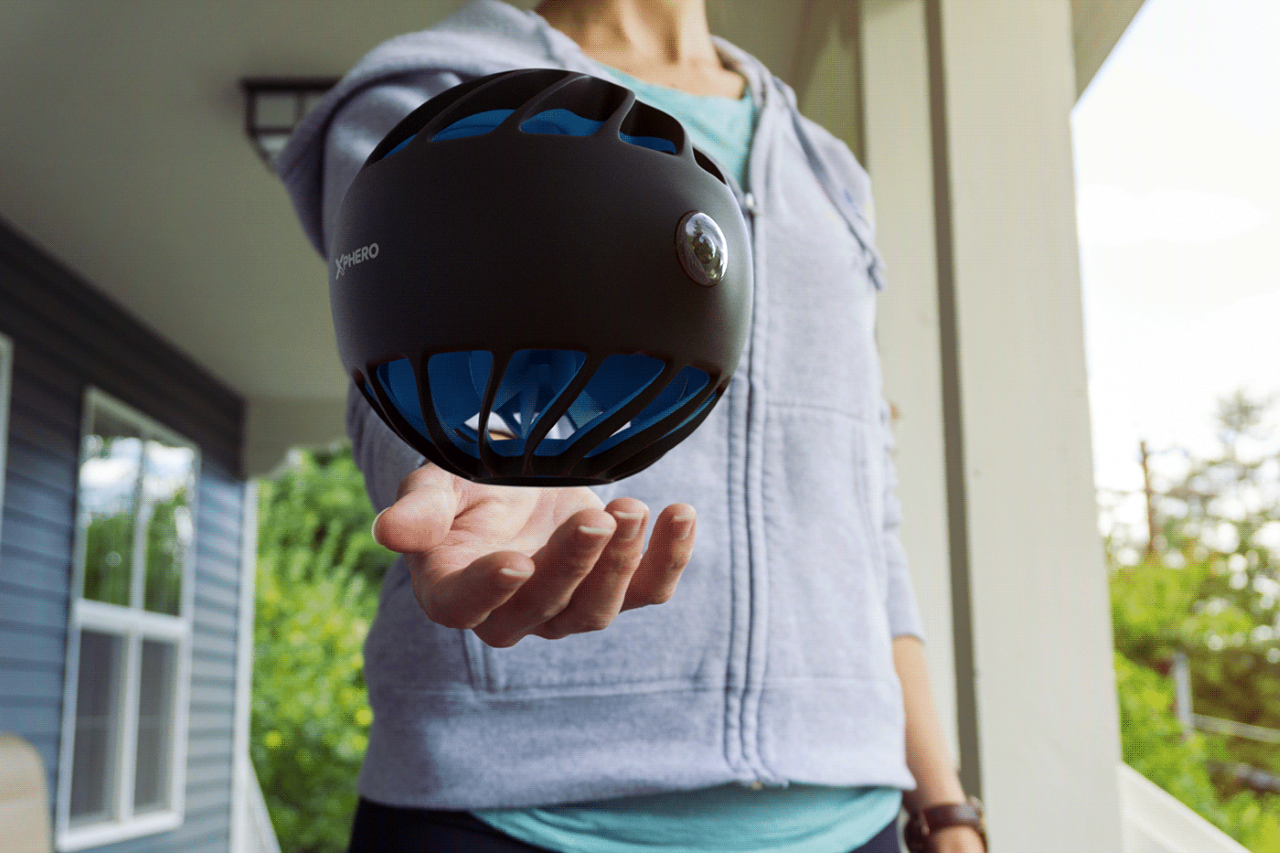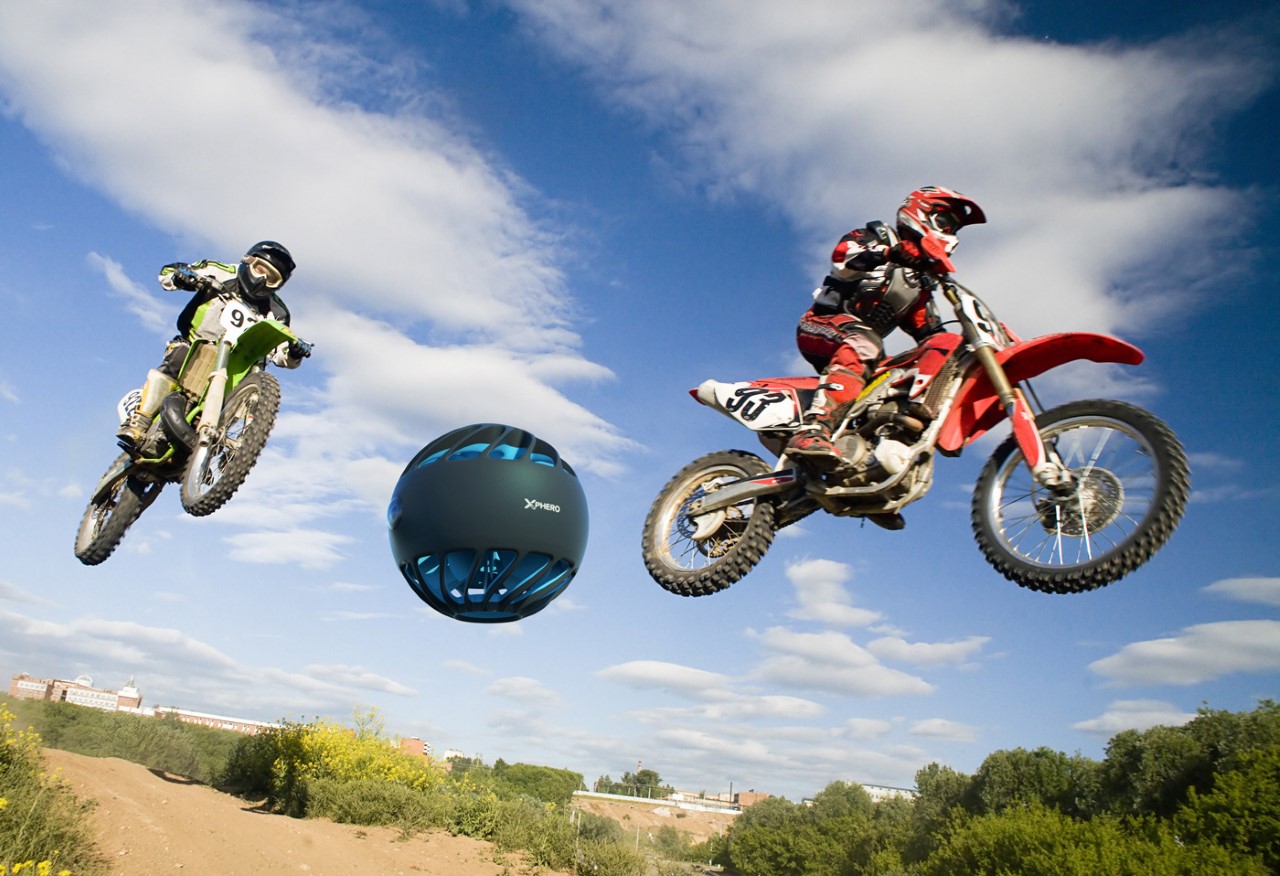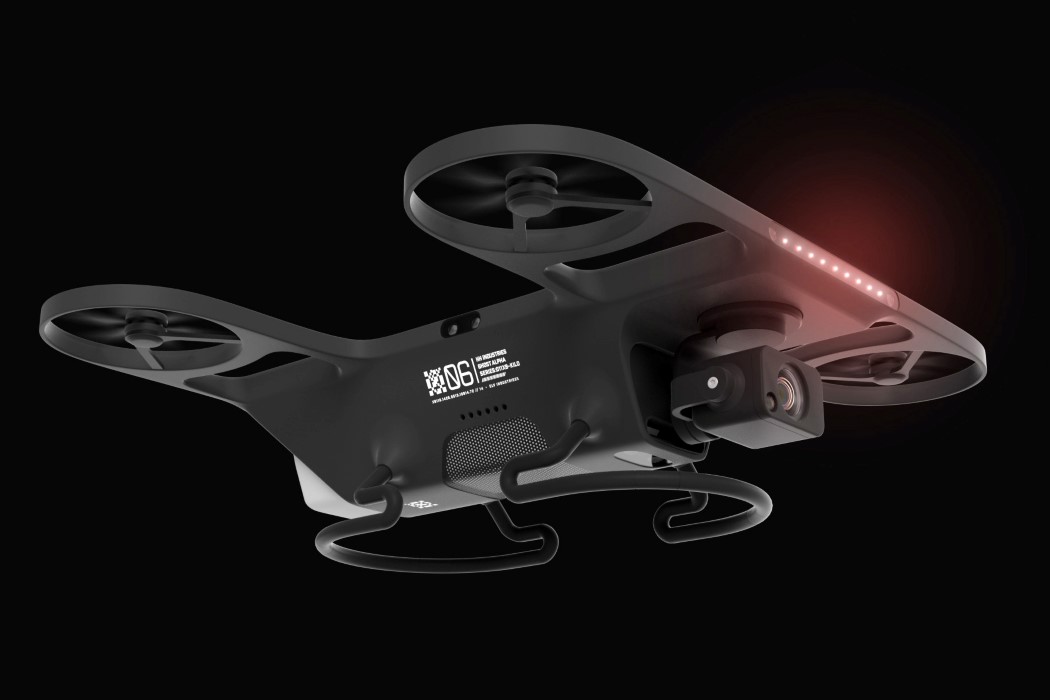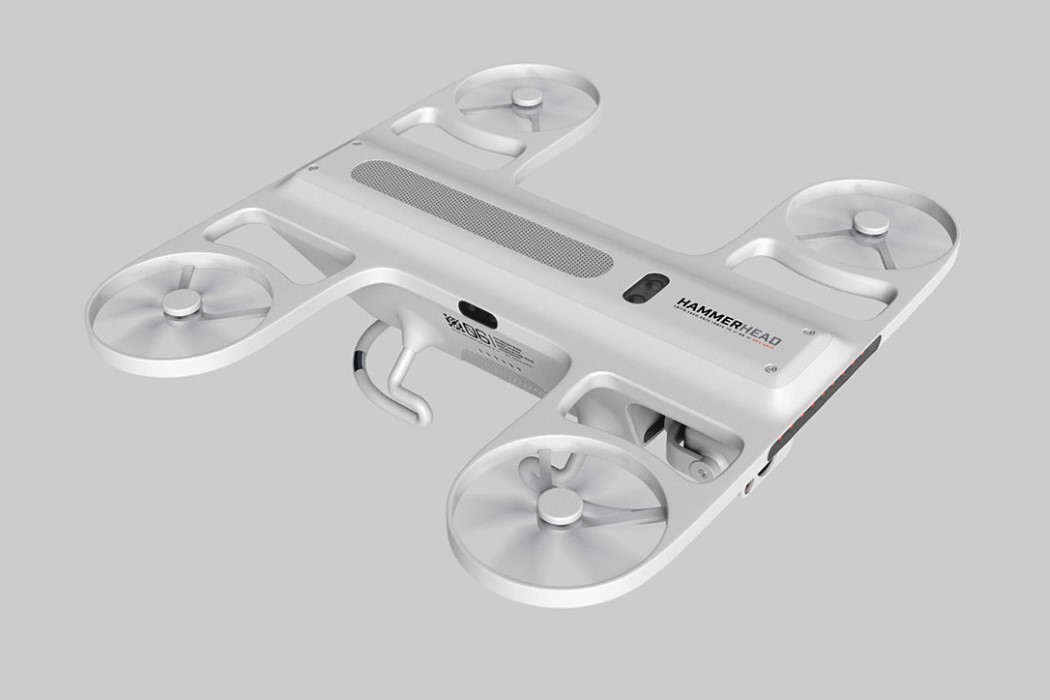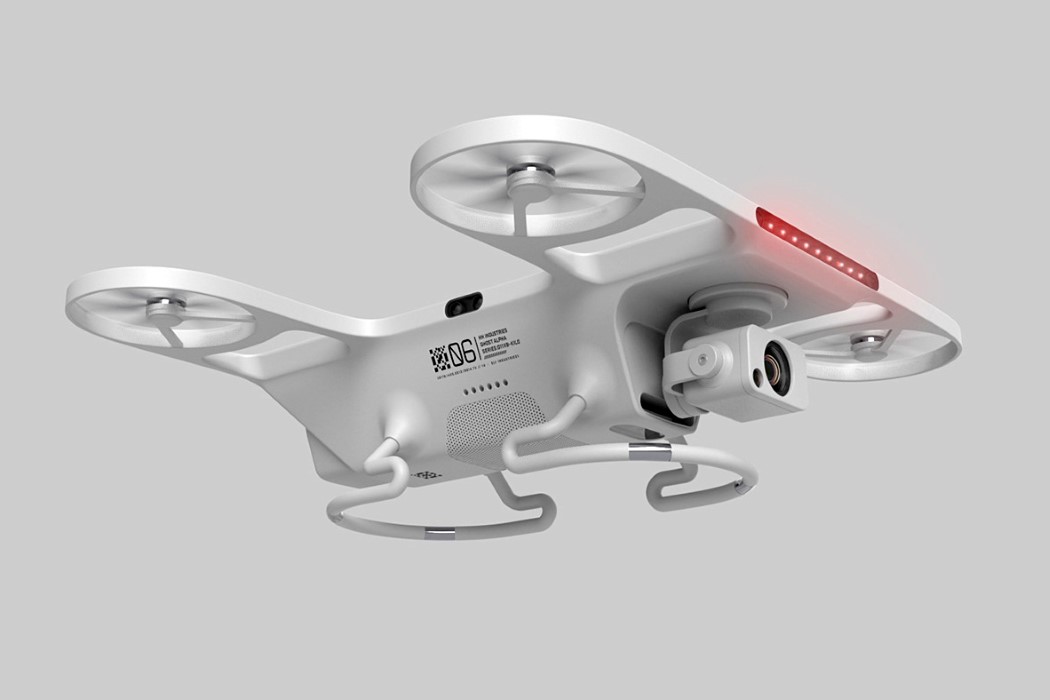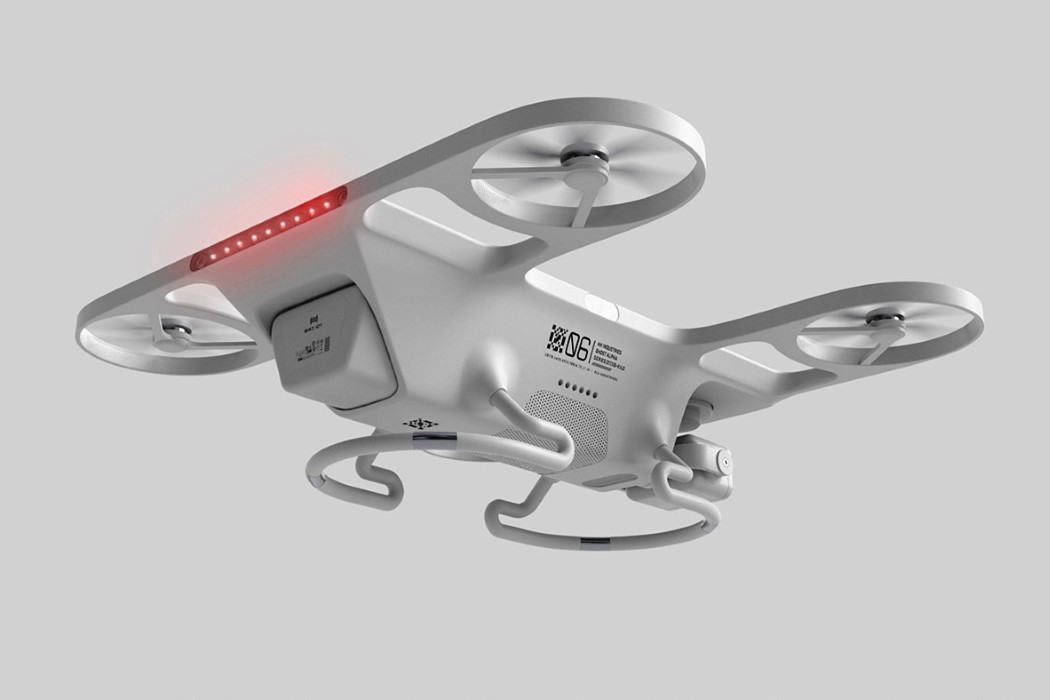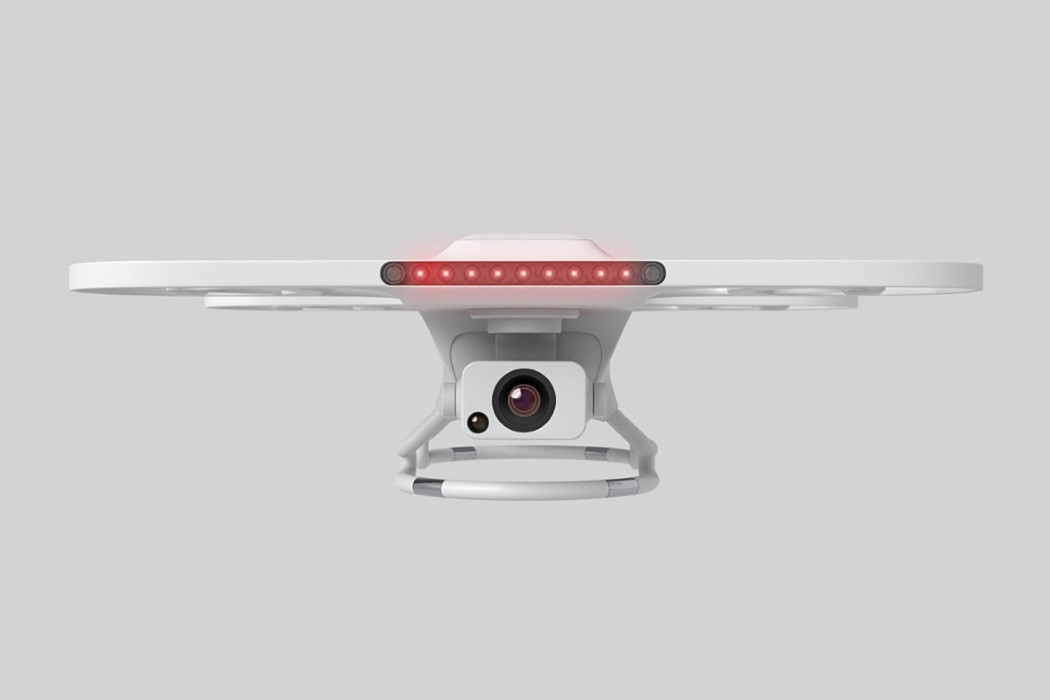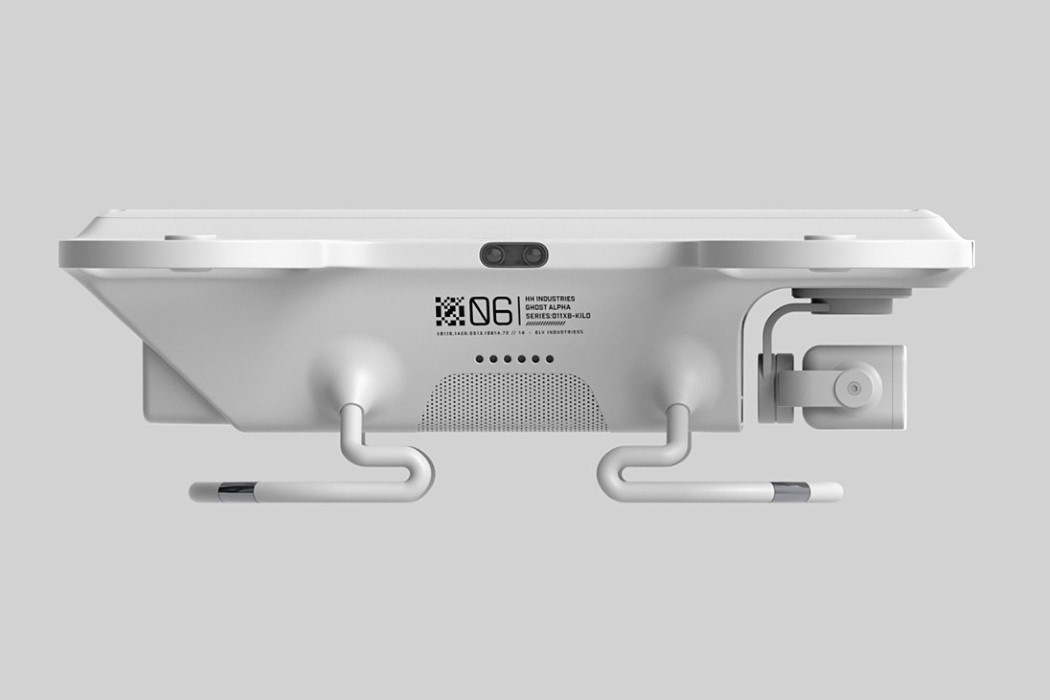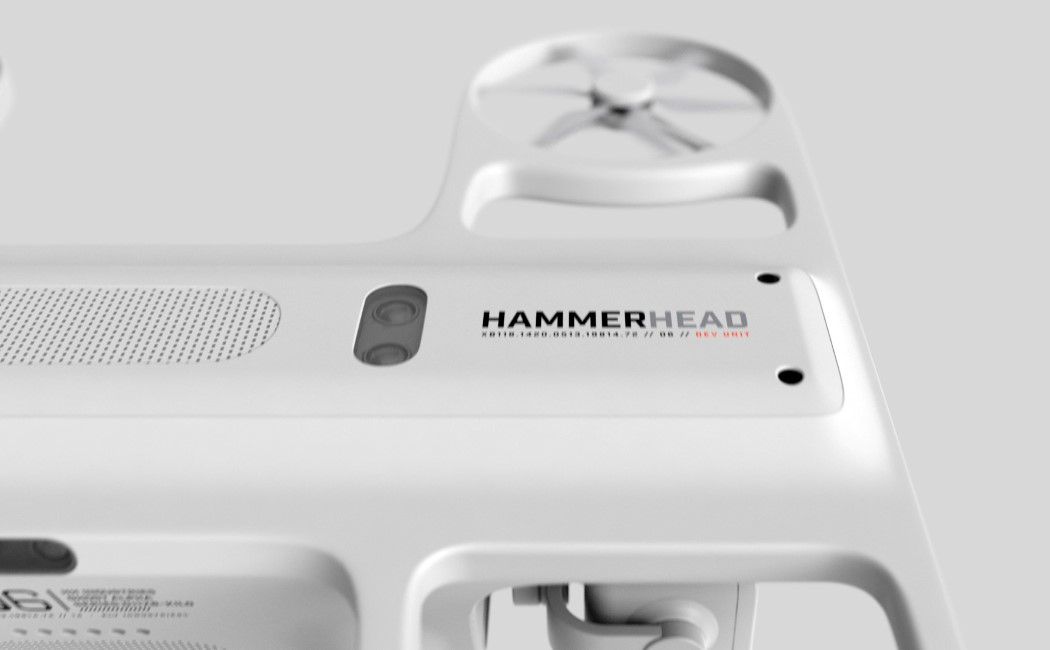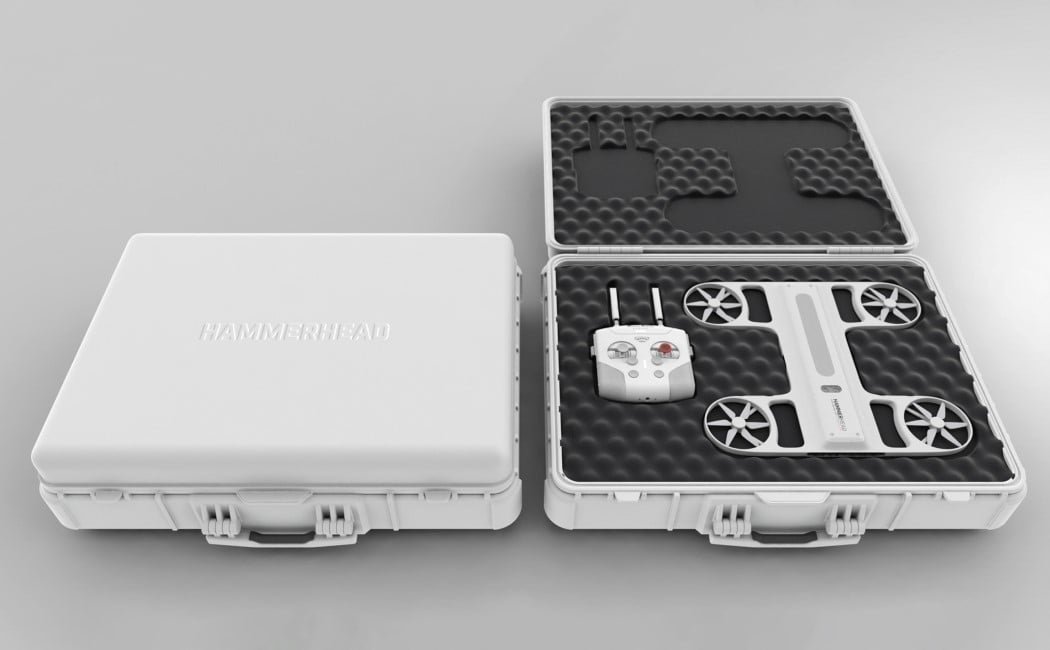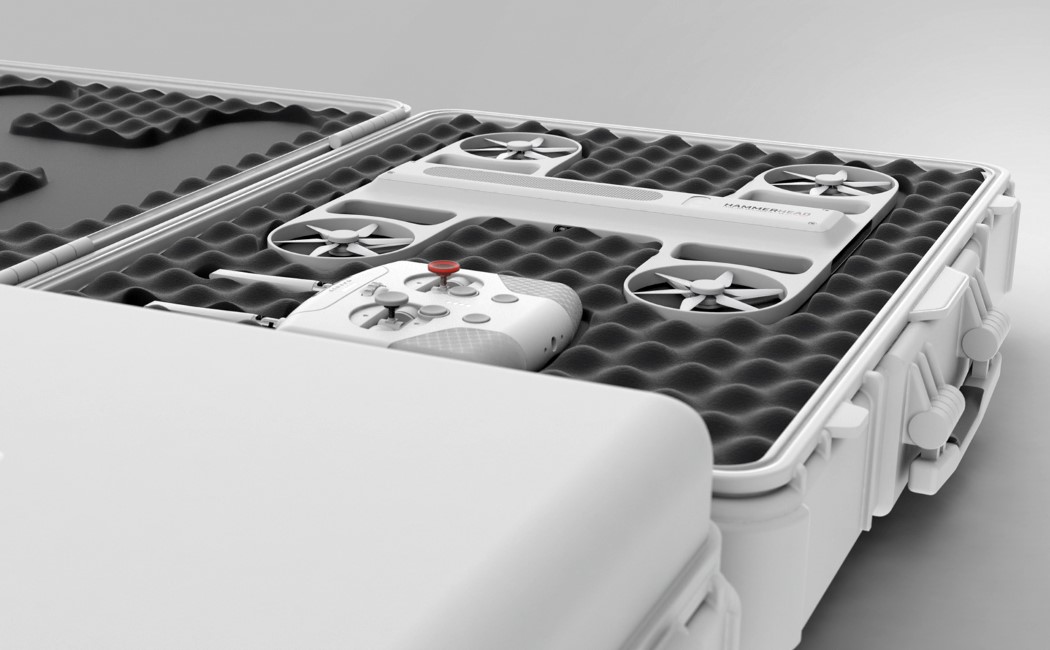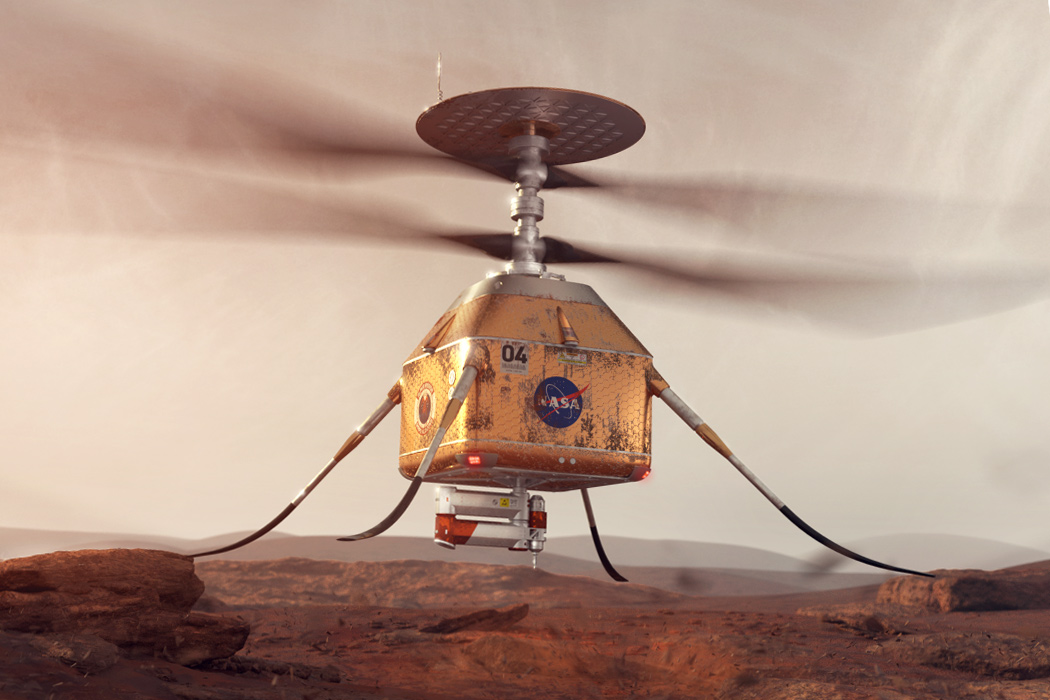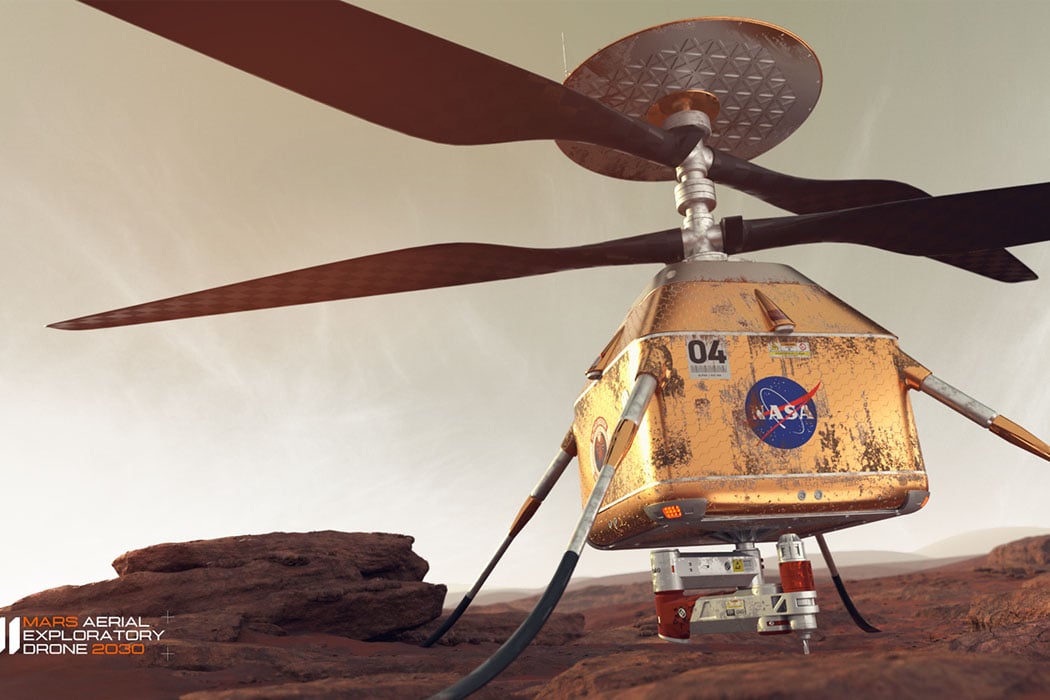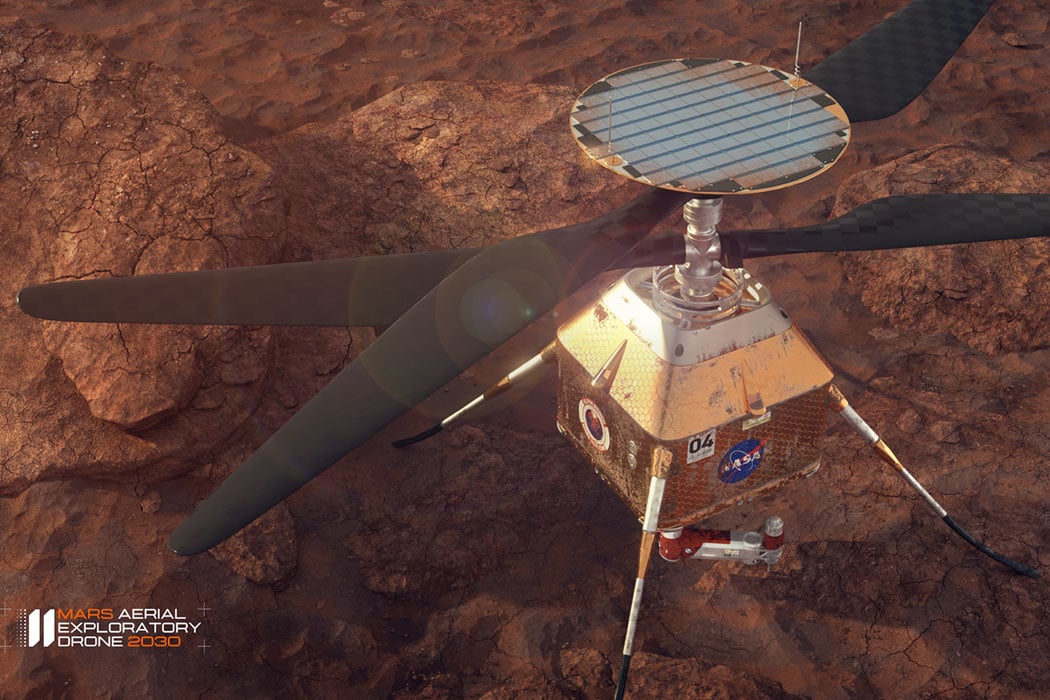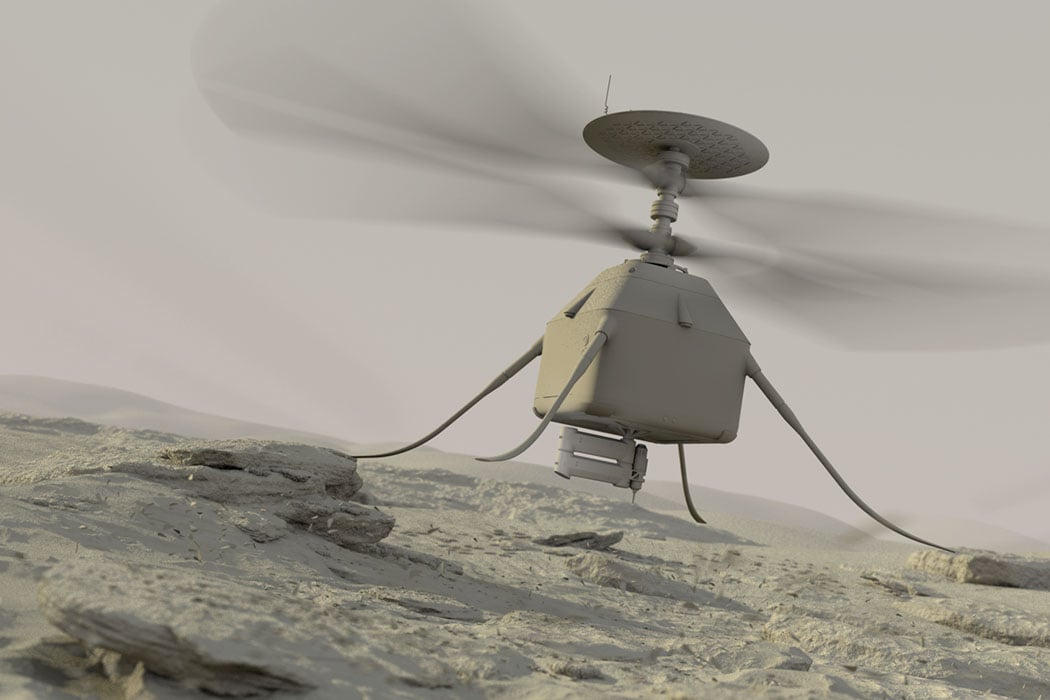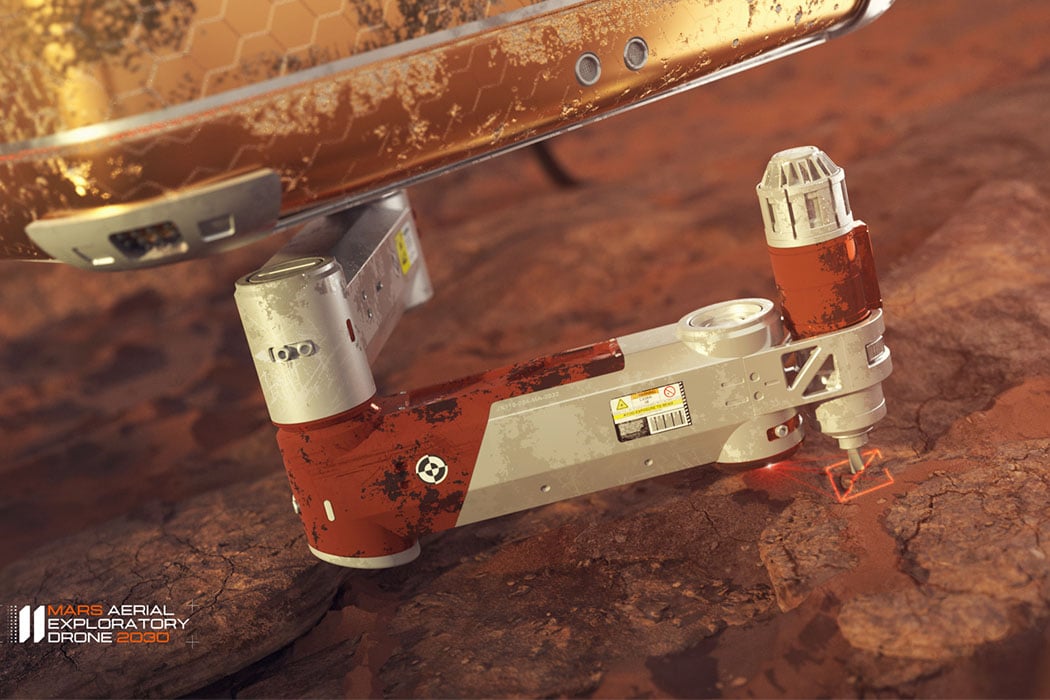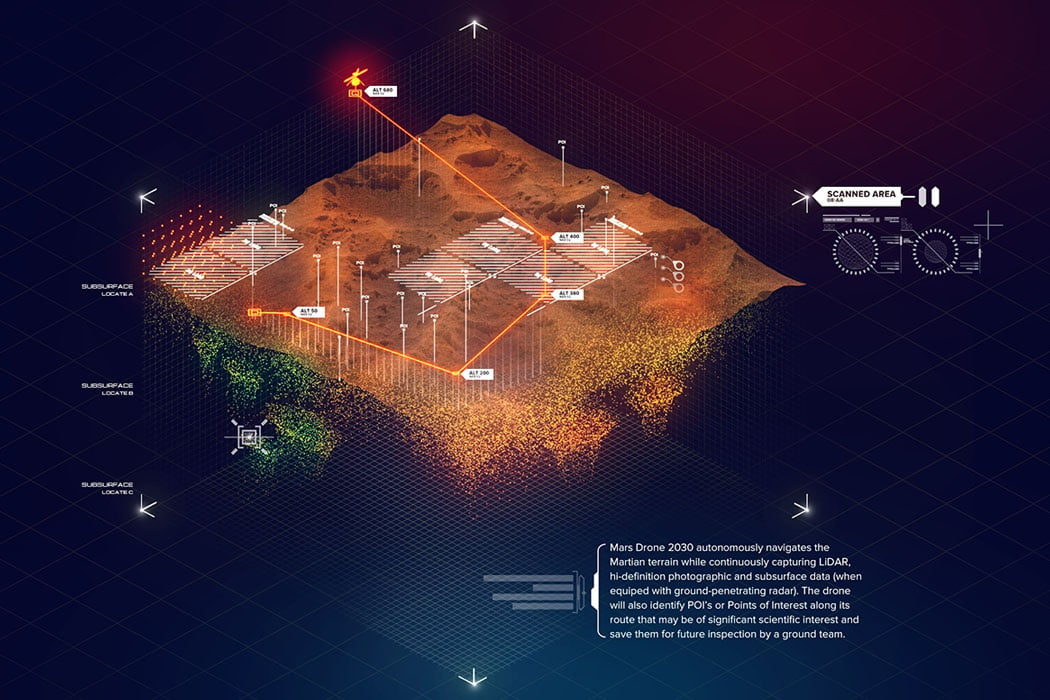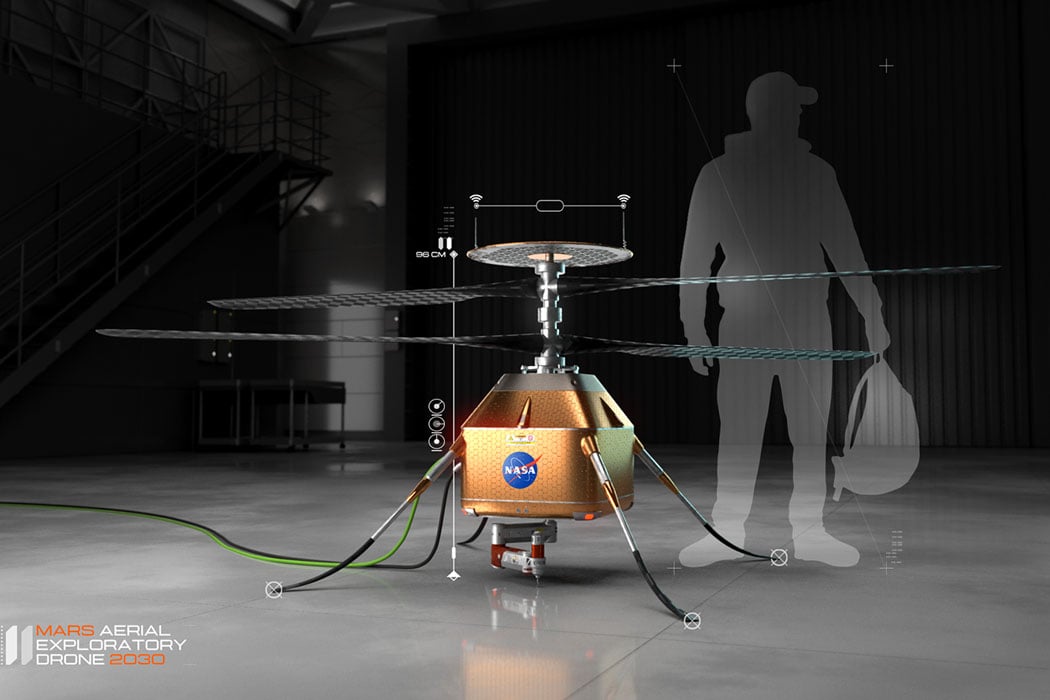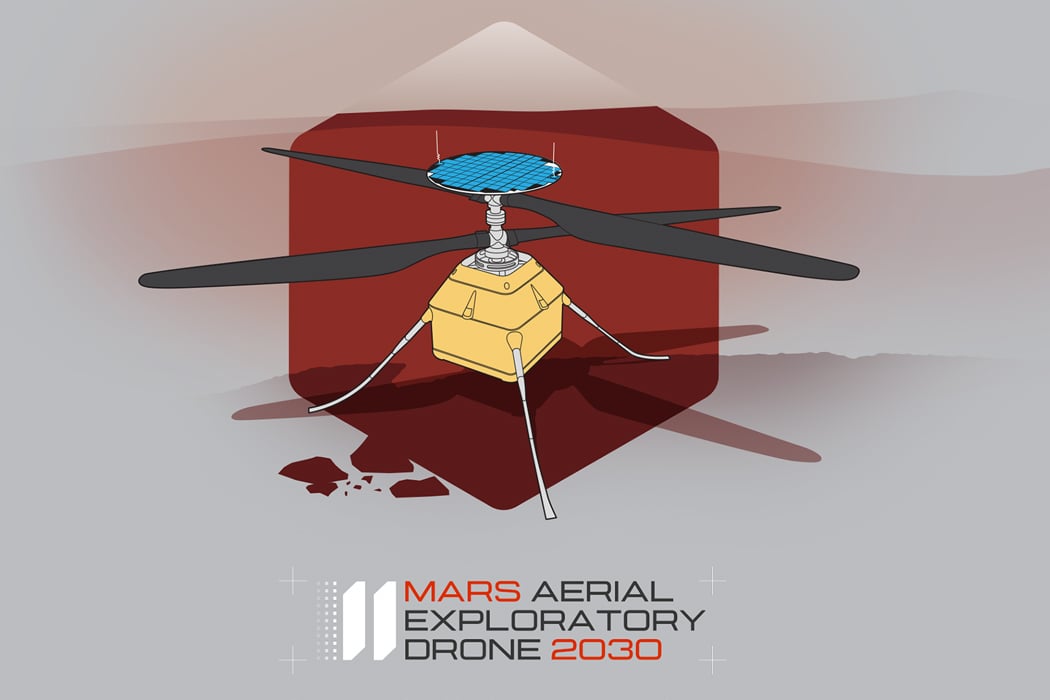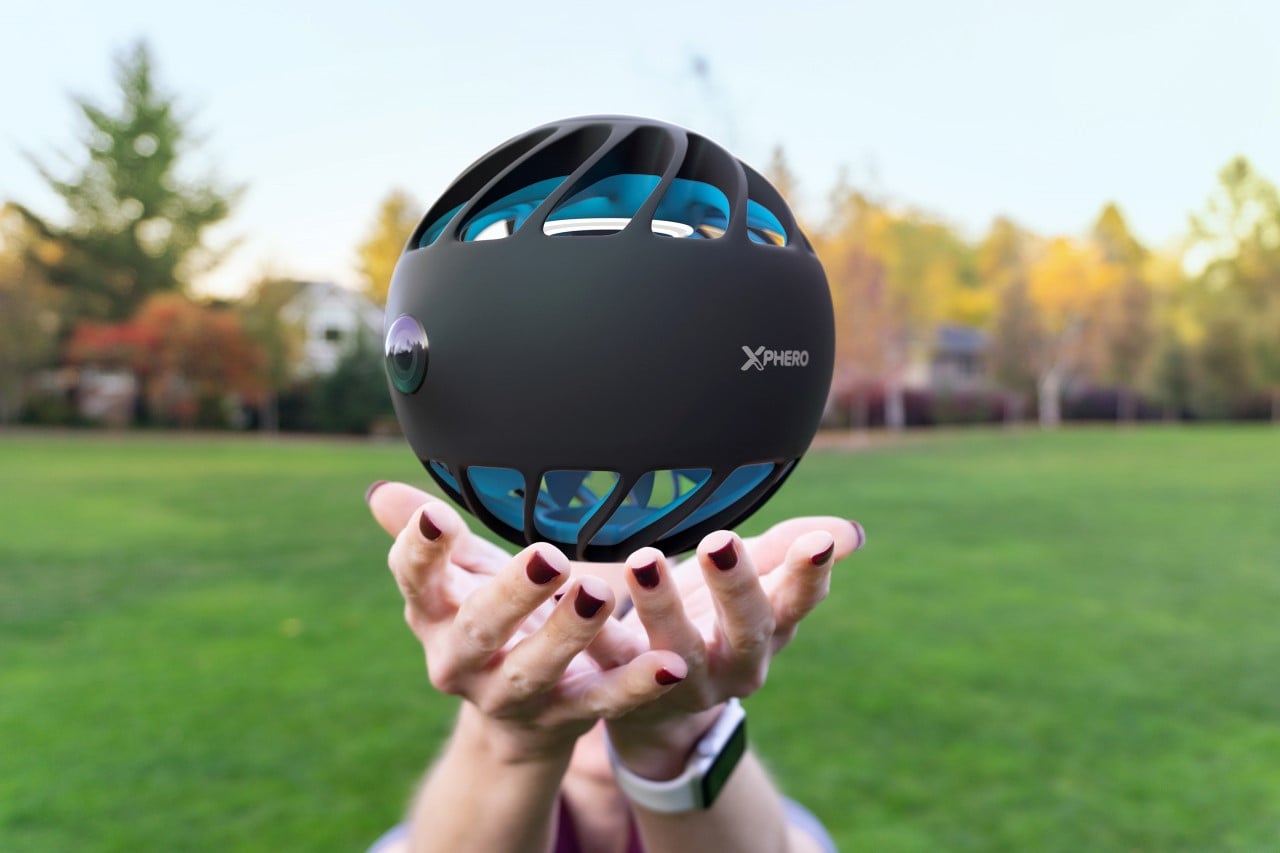
The reason the drone archetype exists is because it’s a tried and tested format. Four propellers on either corner (or six if you’re lucky) and a relatively aerodynamic design with legs for taking off and landing. Throw in a few cameras and sensors and you’ve got yourself a drone that’s easy to recognize. However, break this archetype and you’ve got yourself something quite unrecognizable – like the Jupiter drone concept by Anton Weaver.
Weaver’s drone has a monolithic orb-esque form that defies both gravity as well as the ‘rules’ of drone design. It uses a large single propeller, and what I imagine is an internal gyroscope to move around in the air, stay upright, and even twist and turn while in mid-air. The drone’s unusual design is further characterized by the presence of fisheye lens cameras that allow it to capture everything it sees, sort of like a levitating GoPro.
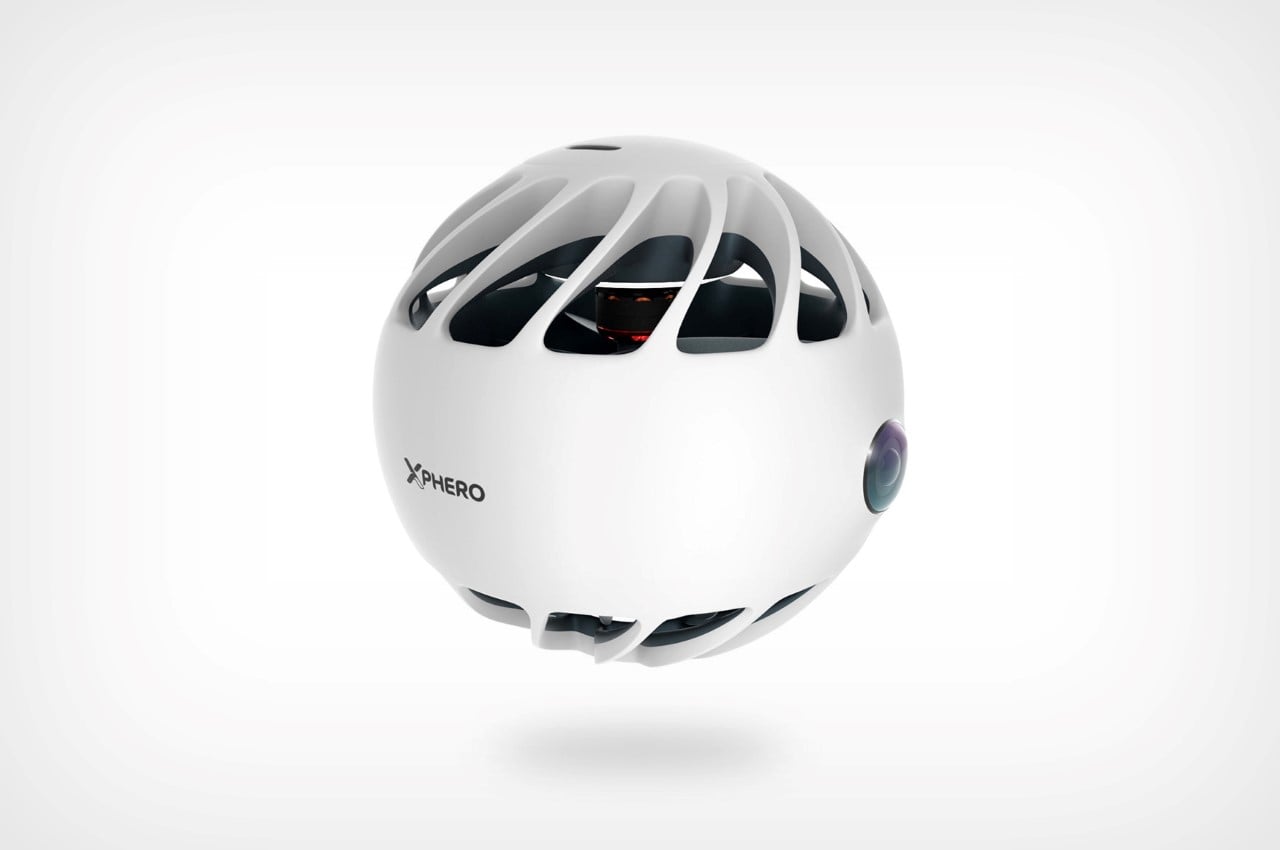
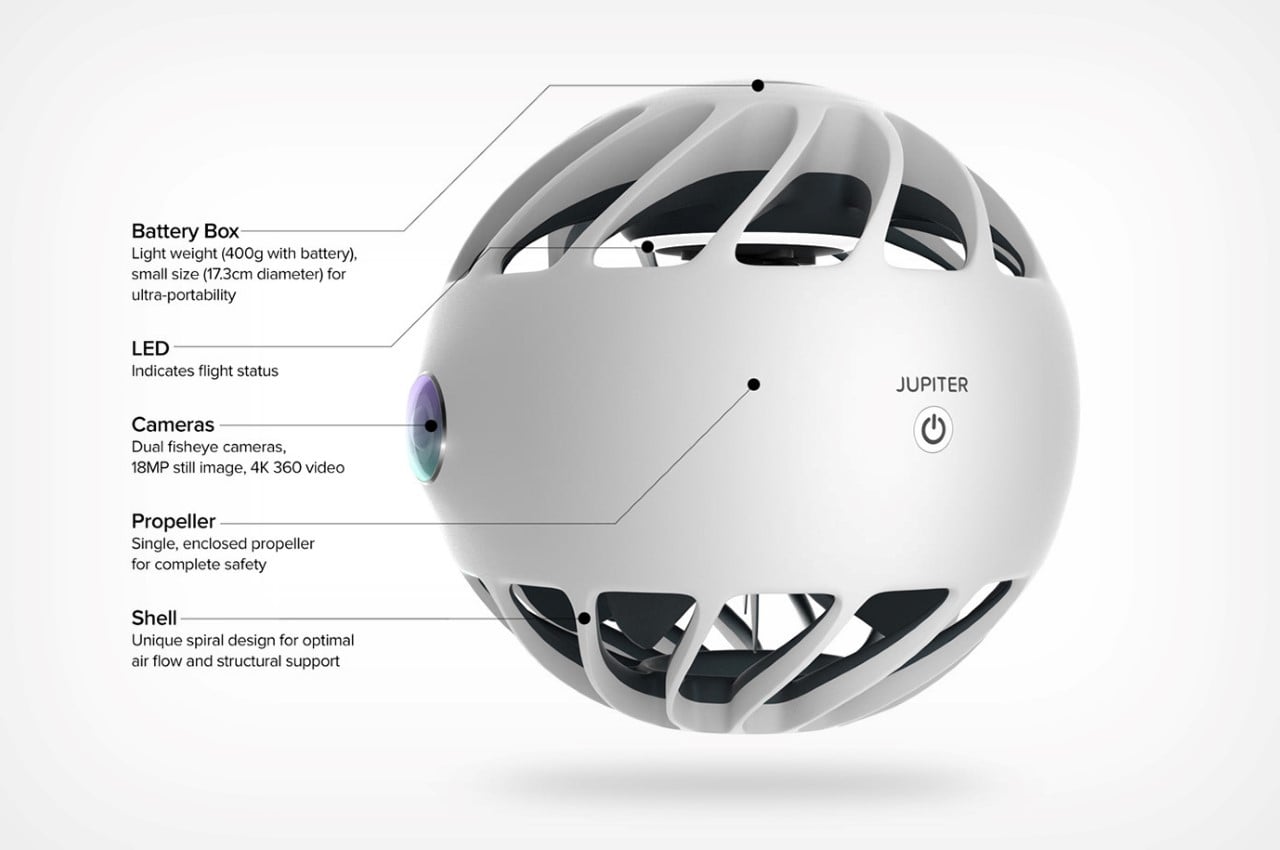
Weaver’s design focuses more on shock-value than actual physics or aerodynamics, which is precisely what makes the Jupiter drone concept fun to analyze from a design sense. The drone’s strange shape almost gives it the appearance of an all-seeing eyeball that levitates around everywhere, and according to Weaver’s visualizations, it’s the kind of drone you’d use to film the action around you – thanks to the presence of dual fisheye 4K cameras that can capture in 360°.
It comes with the battery mounted on the top (weighing a commendable 400g) and has sensors at the bottom that detect proximity, allowing it to nail the landing – because without any bumpers or feet, the Jupiter can only take-off and land on your palm. The fact that the outer shell protects the internal propeller so well makes it perfect for this, as well as acting as a general buffer as the drone flies around filming the world around you!
Designer: Anton Weaver

